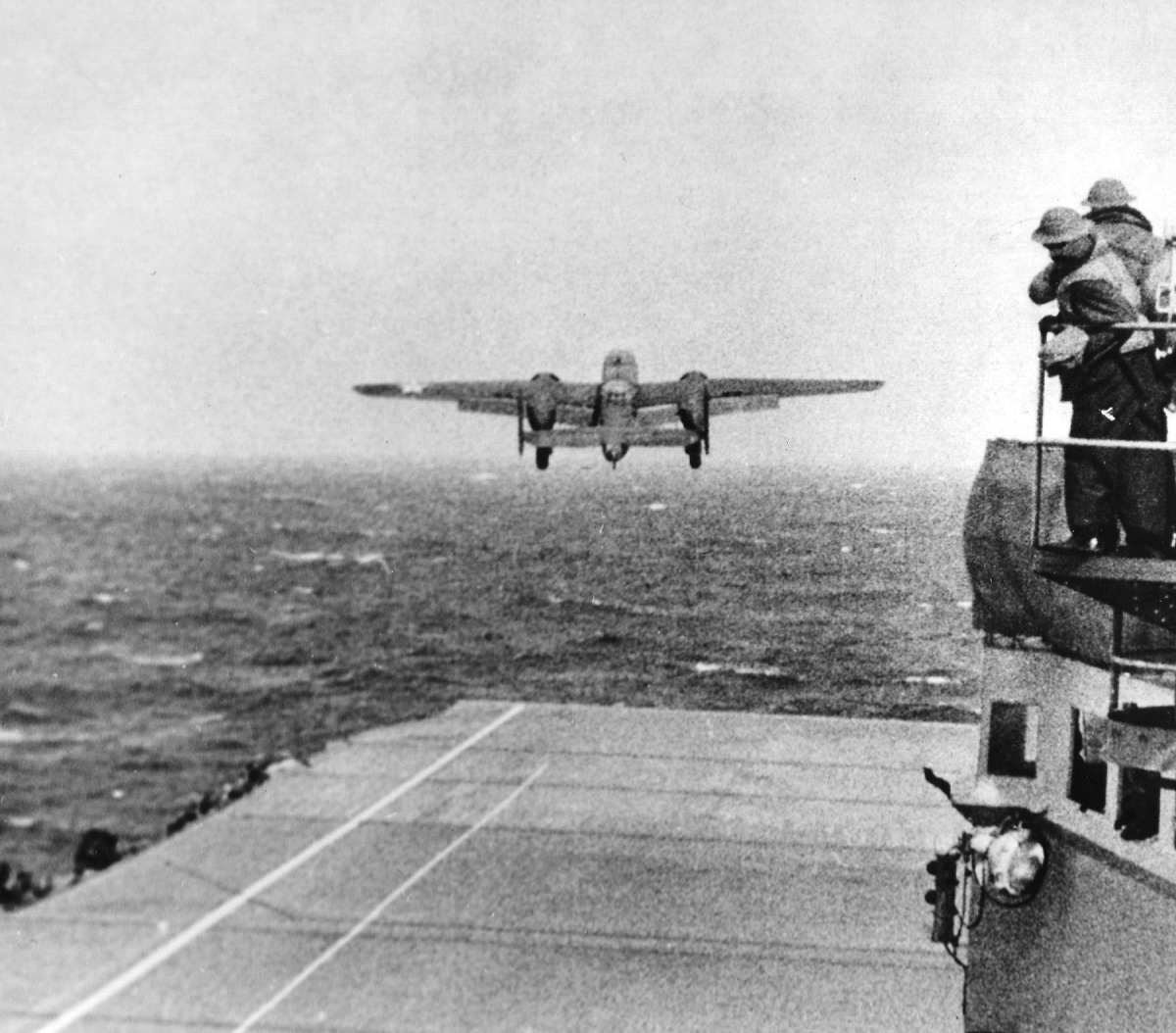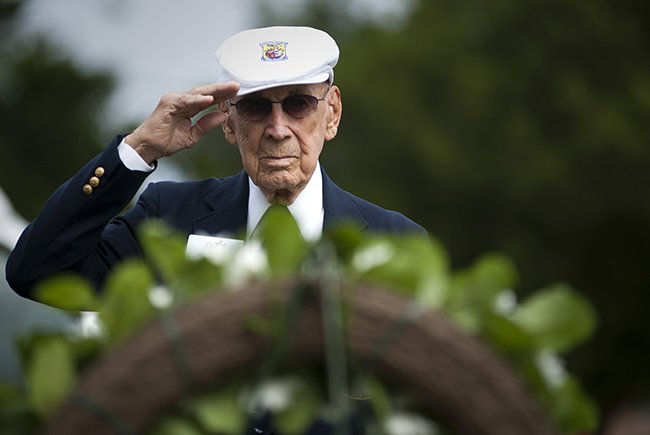A legendary chapter in Air Force history has come to an end
Lt. Col. Richard “Dick” E., retired The “Doolittle Raid’s” last survivor, Cole, passed away on April 9 in San Antonio.
“Lt. Col. Dick Cole reunited with the Doolittle Raiders in the clear blue skies today,” said Secretary of the Air Force Heather Wilson. “My heart goes out to his friends and family as our Air Force mourns with them. We will honor him and the courageous Doolittle Raiders as pioneers in aviation who continue to guide our bright future.”
In retaliation for the Japanese attack on Pearl Harbor, the Doolittle Raiders and the U.S. Army Air Forces launched an attack on Tokyo on April 18, 1942. This action increased American morale in the early stages of World War II.
“There’s another hole in our formation,” said Air Force Chief of Staff Gen. David L. Goldfein. “Our last remaining Doolittle Raider has slipped the surly bonds of Earth and has reunited with his fellow Raiders. And what a reunion they must be having. Seventy-seven years ago this Saturday, 80 intrepid Airmen changed the course of history as they executed a one-way mission without hesitation against enormous odds. We are so proud to carry the torch he and his fellow Raiders handed us.”

Cole was born in Dayton, Ohio, on September 7, 1915. He graduated from Steele High School in Dayton in 1938 and went on to Ohio University for two years of college before joining as an aviation cadet on November 22, 1940. As told by Master Sgt. Andrew Stephens, Air Education and Training Command Public Affairs, in the article Lt Col Dick Cole, last surviving Doolittle Raider, passes away at age 103.
Cole was instructed to go to Parks Air College in East St. Louis, Illinois, for training before traveling to Randolph Field, Texas, and later Kelly Field, Texas, shortly after he enlisted. In July 1941, he received his second lieutenant commission after completing his flying training.
Pearl Harbor was attacked by the Japanese while Cole was with the 17th Bombardment Group in Pendleton, Oregon, on a training mission.
Up until February 1942, when Cole was informed that he would be relocated to Columbia, South Carolina, the 17th BG flew anti-submarine patrols. He and his group volunteered for a mission there, the specifics of which were unknown. Later, Cole would claim that he mistakenly believed his squad was traveling to North Africa.
Cole spent weeks practicing flying maneuvers on the B-25 Mitchell, a twin-engine, five-person bomber operated by the U.S. Army Air Corps that could take off from an aircraft carrier at sea. This exercise is sometimes referred to as the “first joint action” that evaluated the Army and Navy’s ability to work together. The mission’s Airmen and Sailors weren’t informed that their carrier, the USS Hornet, and all of its bombers were traveling in the direction of Tokyo until two days after the carrier finally set sail to bring 16 bombers closer so they could extend their range.

The USS Hornet weighed less than one-fourth of today’s fortress-like aircraft carriers in an era before mid-air refueling and GPS. The B-25 Mitchell bomber #40-2344, with Cole serving as Jimmy Doolittle’s copilot, would lift off with just 467 feet of takeoff distance.
A sighting by a Japanese patrol boat that prompted the task force commander, U.S., made the mission even more challenging. Admiral William F. 10 hours ahead of schedule and 170 nautical miles away from Japan, “Bull” Halsey launched the mission more than 650 nautical miles away. The Mitchells were initially planned to land, refuel, and then continue on to western China, providing the Army Air Corps with a squadron of B-25s and a commander. But as they attempted to reach the airfields of unoccupied China, the aircrews were now confronted with stronger opposition. Cole and his companions kept at their task, nevertheless.
Cole and the Raiders flew at a wave-top level of around 200 feet with their radios off, avoiding detection for as much of the distance as they could. The bombers attacked Yokohama, Nagoya, Osaka, and Kobe as well as Tokyo itself, focusing on dry docks, armories, oil refineries, and aircraft factories in groups of two to four aircraft. Because the Raiders caught the Japanese air defense off guard, minimal anti-aircraft fire was exchanged, and just one Japanese Zero was pursued. The Raiders took off after delivering their bombs and headed for safety in China.
Cole himself jumped out at about 9,000 feet, one of many Airmen who were forced to parachute out into the night. With Cole’s own aircraft landing in a rice field filled with night soil, all planes were deemed lost. Eight of the 80 Airmen who participated in the operation were caught by Japanese forces; five were put to death, and three were imprisoned (where one died of malnutrition). With the aid of Chinese farmers and guerrillas, all 72 more Airmen were able to escape to safety and continued to fight for the duration of World War II.
The raid dealt the Japanese a psychological blow, and they moved four fighter units and called back their best officials from the Pacific to defend the cities in case the American bomber forces came again.

After the Doolittle Raid, Cole remained in the China-Burma-India Theater supporting the 5318th Provisional Air Unit as a C-47 pilot flying “The Hump,” a treacherous airway through the Himalayan Mountains. The USAAF created the 5318th PAU to support the Chindits, the long-range penetration groups that were special operations units of the British and Indian armies, with Cole as one of the first members of the U.S. special operations community. On Mar. 25, 1944, the 5318th PAU was designated as the 1st Air Commando Group by USAAF commander Gen. Henry H. Arnold, who felt that an Air Force supporting a commando unit in the jungles of Burma should properly be called “air commandos.” Cole’s piloting skills blended well with the unconventional aerial tactics of Flying Tiger veterans as they provided fighter cover, bombing runs, airdrops, and landing of troops, food, and equipment as well as the evacuation of casualties.
As a command pilot with more than 5,000 flying hours in 30 different aircraft, more than 250 combat missions, and more than 500 combat hours, Cole left the Air Force on December 31, 1966. His decorations include the Chinese Army, Navy, and Air Corps Medal, Class A, First Grade, the Distinguished Flying Cross with two oak leaf clusters, the Air Medal with an oak leaf cluster, the Bronze Star Medal, and the Air Force Commendation, Medal. Additionally, in May 2014, the Congressional Gold Medal was given to each Doolittle Raider.
He continued to attend San Antonio-area Air Force functions in his latter years and visited Air Force schools and stations to encourage the spirit of service in upcoming Airmen. Cole attended the naming ceremony for the Northup Grumman B-21 Raider, which was named in homage to the Doolittle Raiders, on September 19, 2016.
“We will miss Lt. Col. Cole, and offer our eternal thanks and condolences to his family,” Goldfein said. “The Legacy of the Doolittle Raiders – his legacy – will live forever in the hearts and minds of Airmen, long after we’ve all departed. May we never forget the long blue line, because it’s who we are.”

Photo by U.S. Air Force

